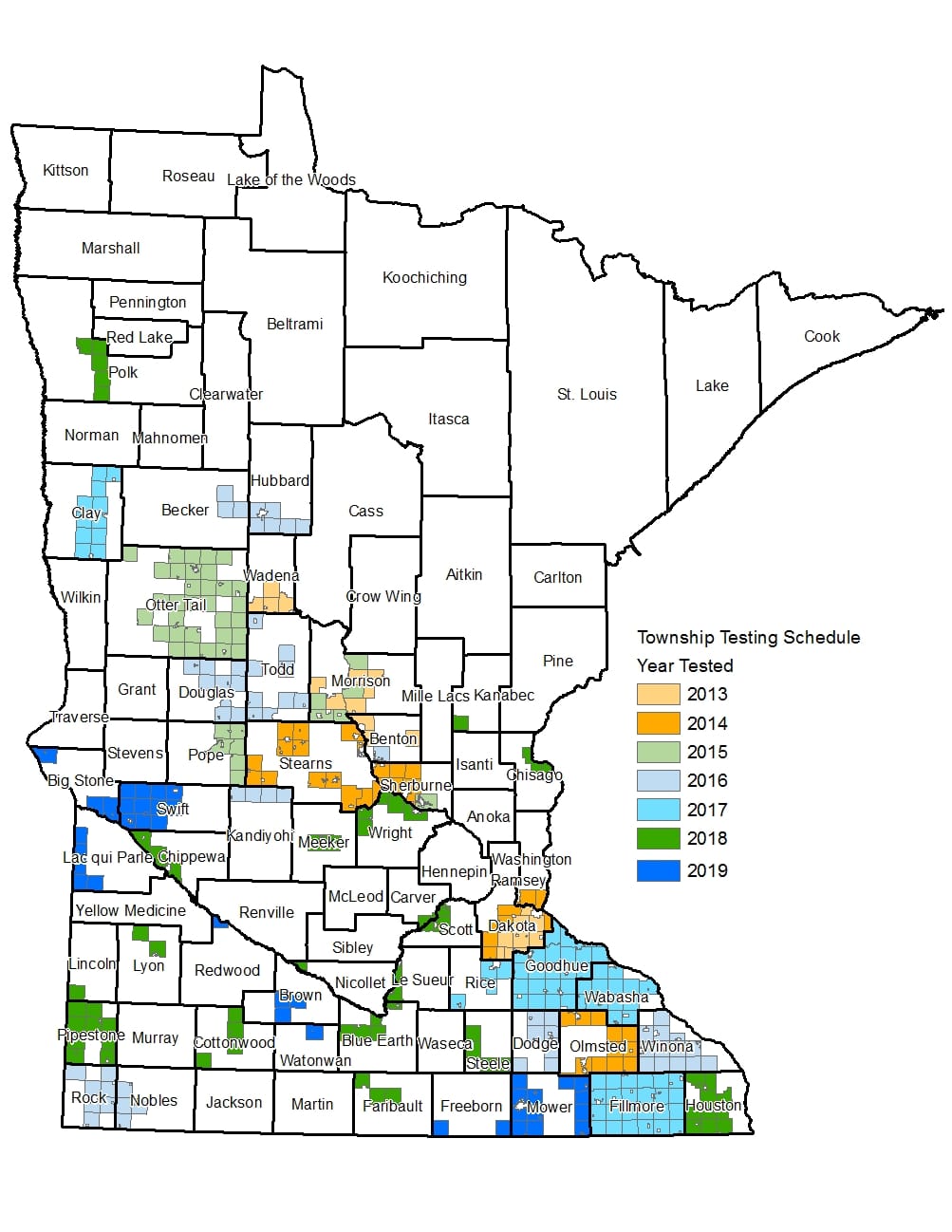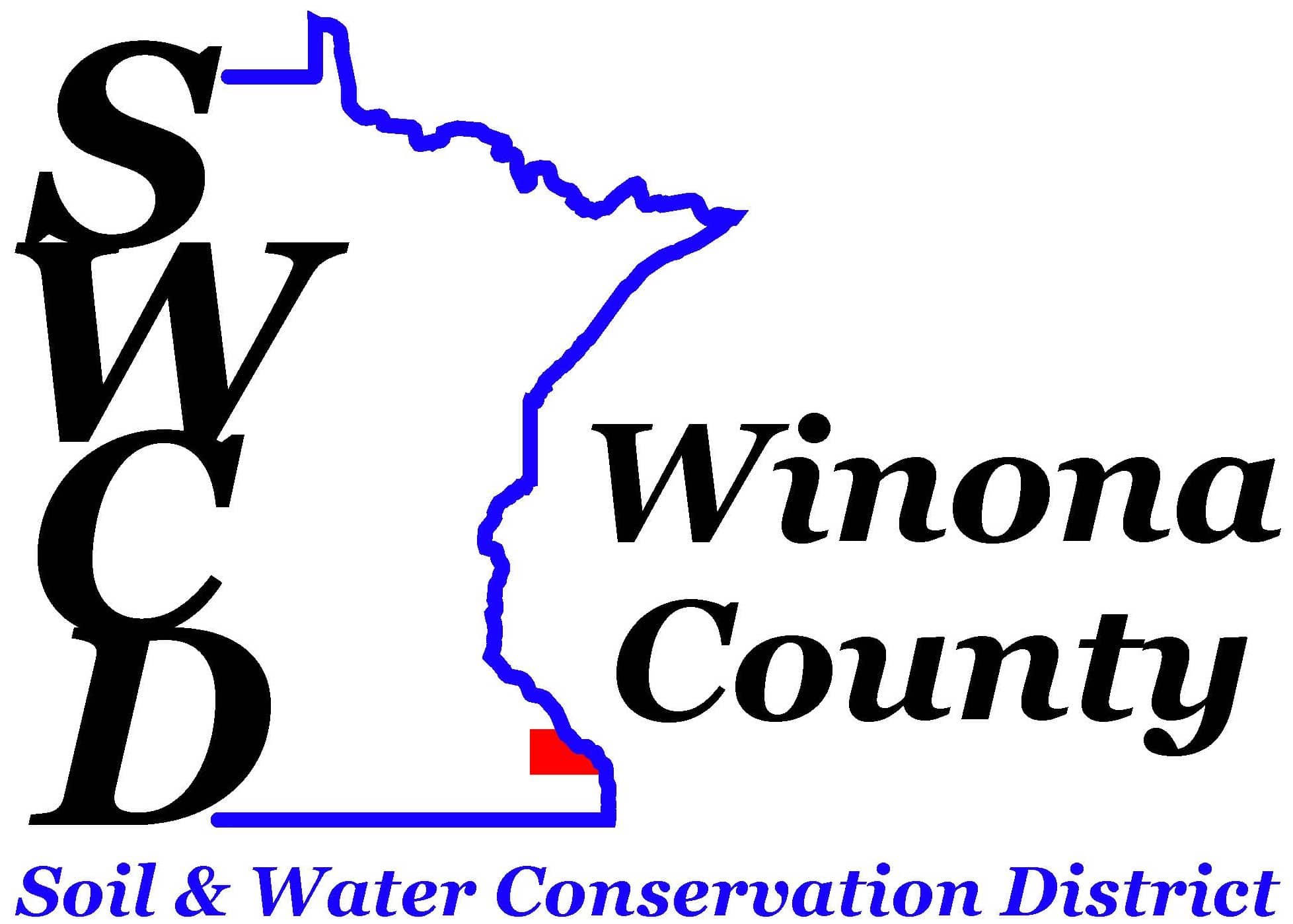Nitrate Levels in Private Wells in Winona County from the Township Tests
Nitrate-nitrogen (referred to as nitrate) is a water soluble compound composed of nitrogen and oxygen that can occur naturally in groundwater at levels typically in the range of 0 to 3 parts per million (ppm). Human activities such as sewage disposal, livestock production, and crop fertilization can elevate the level of nitrate in groundwater.
The drinking water standard for nitrate is 10 ppm; any number above this nitrate level can negatively affect human health, specifically infants under the age of six months. Nitrate contamination above the drinking water standard is most commonly found in aquifers that are vulnerable to contamination from the land surface, such as sand and gravel aquifers and fractured bedrock aquifers.
Minnesota Department of Agriculture (MDA) significantly revised the Nitrogen Fertilizer Management Plan (NFMP) in March 2015 after working extensively with an advisory committee. The plan calls for an assessment of nitrate-nitrogen concentrations in private wells at the township scale. MDA has identified townships across the state that are vulnerable to groundwater contamination and have significant row crop production. The schedule of testing for these priority townships is included on MDA’s Township Testing Schedule and Results page. Townships that are not highlighted may also be considered if there is data to suggest there is a local groundwater problem.
More than 70,000 private well owners have be offered nitrate testing in over 300 townships (35 to 59 townships per summer) by 2019. This work was done in partnership with local governments across the state.
Remember, private wells should be tested for bacteria at least once a year and for nitrate every year or every other year. A Minnesota Department of Health (MDH) certified water testing lab can provide nitrate and bacteria testing services. Search for a certified lab nearest you.



